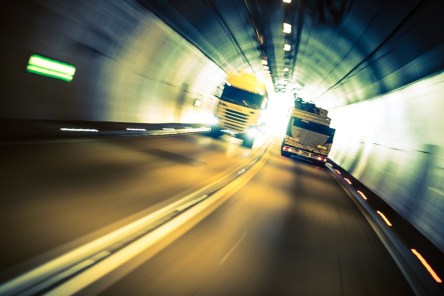Every single person in Lendlease’s 11,000-strong team has their sights set on net zero emissions by 2025. It’s a huge undertaking – one which will be impossible without the help of technology and data. This puts Richard Kuppusamy and Helen Lam – two of Lendlease’s digital leaders – in the driver’s seat as they help steer their company towards Mission Zero. Bernie Devine, regional manager for Yardi in Asia Pacific, recently caught up with the pair as part of the latest installment of Yardi’s Proptech Insights series. A big pivot Lendlease must meet its first net zero target in four years – an aggressive but “very deliberate” decision, Kuppusamy told Yardi’s audience. “Everyone who is in Lendlease today has to deal with this problem,” he emphasized. And it’s a big problem for everyone in the real estate sector, given the global built environment is responsible for almost 40% of the world’s emissions. But Lendlease – which designs, constructs and manages buildings on four continents – is in a rare position of influence across the entire development lifecycle. It is for this reason that Lendlease’s technology strategy is watched by the entire industry with interest. Kuppusamy joined Lendlease in March as Head of Lendlease Digital Asia and is based in Singapore. He oversees leadership, management and performance of Lendlease’s digital business unit across the region – and that includes Lendlease’s new property lifecycle platform, Podium. Podium links everything from building plans and construction programs to the results and realities of operation. It is the foundation of autonomous buildings, he noted. Podium supports data-driven decision-making “at every touch point” of the property lifecycle and is the key to economic and environmental sustainability. With Podium, Lendlease is “pivoting” towards a future as a “software engineering firm,” Devine observed. And that means data is now one of Lendlease’s greatest assets. Data rich, insight poor Globally, the real estate sector remains “data rich and insight poor,” Richard observed. “There are a lot of solutions, but they are all very siloed.” How do we dismantle these silos and unlock the “proprietary data jails,” as Kuppusamy called them, for a greater common good? “It’s not just about sharing – but about sharing in a meaningful way.” The industry must move away from technology that solves “spot solutions” or “siloed problems,” Helen added. “In real estate there are no silo problems – they are all interrelated.” While many systems capture data, only “actionable insights” deliver value, Kuppusamy said. Devine agreed. “I always say to our clients: ‘We deliver actionable insights, but it’s up to you to take action.’” As Head of Innovation and Development Practices in Asia, Helen Lam is responsible for identifying new ideas to be researched, tested and integrated into the way Lendlease works. One of the projects currently underway is to eliminate diesel – which is “really dirty, noisy and hazardous” – from construction sites. “We don’t have the inhouse tech to solve it all ourselves,” so Lendlease is partnering with an Asian start-up with an advanced compact and connected lithium-ion battery system. The technology eliminates 80% of onsite emissions, “is much quieter and emits zero fumes,” she explained. Data can also aid “macro decisions” that deliver a better experience for people, alongside those that are best for the planet, Lam added. Lendlease has installed Internet of Things technology in restroom facilities in retail malls across Asia, for instance, to better understand peak loads. From this data, Lendlease has enhanced the customer experience, while also “making better procurement decision around our contract negotiations and reducing operational expenditure.” Self-driving buildings Devine pointed to the use of digital twins as another tool that can help the real estate sector move towards net zero. In May, Ernst and Young reported that digital twins could save up to 35 percent on project and building costs and reduce city-level carbon emissions by between 50 and 100 percent. Lendlease has...
Experts Assess
COVID-19 Energy Impacts
Along with tracking the momentous public health and economic implications of COVID-19, renewable energy advocates are keeping a close eye on how the pandemic is affecting the Earth’s environmental well-being. The International Energy Agency, which advocates for sustainable energy policies, reported that average global road transport activity fell by 50% of the 2019 level in the first quarter of 2020, while aviation activity declined 60%, spurring an unprecedented decline in world oil demand. The U.S. saw a 50% reduction in the use of jet fuel and 30% less gasoline consumed; meanwhile, natural gas use in commercial and residential buildings dropped by almost 20% from late March to early June of this year, according to a study of COVID-19’s effects on energy and the environment by researchers from the MIT Sloan School of Management, Yale University and Northwestern University. Reductions spark optimism “Overall, these reductions reflect a 15% total reduction in daily CO2 emissions, which is the largest annual percentage decline for the U.S. in recorded history,” says MIT Sloan professor Christopher Knittel, one of the researchers. The recent drop in consumption and emissions offers a glimpse of a cleaner future – if the effort is sustained after the crisis abates. In the wake of COVID-19, “it is essential that we build back better. We need to create a more resilient and sustainable clean energy system in order to reduce the risk of facing the catastrophic crises that climate change could bring,” says Jules Kortenhorst, CEO of the Rocky Mountain Institute, writing for the World Economic Forum. That means prioritizing structural changes that “make a real difference for the energy transition in the longer term” rather than jumping on “the bandwagon to push the green agenda in short-term relief packages,” say researchers from ETH Zurich’s...
Cleaner Trucks Initiative...
NOx Regulations
A recent proposal to tighten nitrogen oxide (NOx) emissions aims to improve air quality. As a side effect, the changes will undoubtedly impact businesses. Can businesses expect to see shipping prices increase as fleet overhead rises? NOx is a type of air pollution formed during the combustion process in motor vehicles. The particulates have an adverse reaction on the environment and human health. By 2025, the Environmental Protection Agency (EPA) calculates that more than 33 percent of NOx emissions will spew from heavy-duty trucks. To decrease those projected emissions, the EPA is drafting a new set of NOx emission regulations. The EPA recently initiated the Cleaner Trucks Initiative. The legislation updates federal NOx regulations, which have not been revised since 2001. Additionally, the proposal creates a single federal rule for an incongruent batch of federal and state guidelines. Several air agencies have petitioned the EPA for clearer guidelines and tighter standards for the trucking industry. The new plan will help to streamline compliance standards while promoting transport efficiency. The resulting changes will result in less particular matter and cleaner air. “The Cleaner Trucks Initiative will help modernize heavy-duty truck engines, improving their efficiency, and providing cleaner air for all Americans,” said Acting Administrator Andrew Wheeler said during a press conference. The initiative builds upon the success of previous legislation. Between 2007 and 2017, NOx emissions declined by 40 percent. The new challenge is to continue NOx emission decline without hindering economic growth. John Mies, manager of corporate communications for Volvo Group North, has been a vocal supporter of the proposal. Past legislation has been “challenging but practical” he said. He added, “This is a great opportunity to update and streamline the certification and compliance processes, ensuring a focus on real-world emissions control with minimal impediment...



